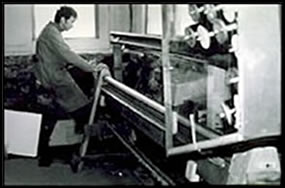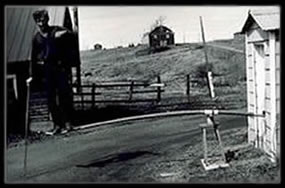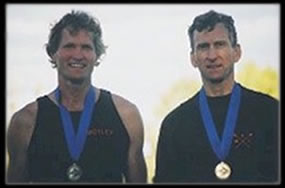We are committed to making our oars and components efficient, durable and easy to use, and we continue developing improvements that achieve this goal. Read on for the list of our oar innovations or visit the full company timeline.
1976: Peter and Dick begin experimenting with carbon and fiberglass oar construction.
1977: First Concept2 oars used in World Championships by US pair of Anne Warner and Anita DeFrantz.
1978: College crews using Dreissigacker Racing Oars experience increases in speed, and orders substantially increase.
1987: All-carbon shaft introduced for further weight reduction over the carbon and fiberglass construction.
1991: The Big Blade is developed at Concept2. This asymmetric hatchet-shaped blade appeared to be 1–2% faster than existing designs and is prominently used during the 1992 Barcelona Olympics.
1996: The Smoothie blade results from investigating the effects of curvature and tip angle. Speed testing between the new design and the Big Blade indicates a speed advantage to the new blade.
1997: Oar length adjustable at the handle.
2001: Vortex Edge. Based on the same principles used in aeronautics, blades with the Vortex Edge result in increased efficiency during the first part of the drive.
2004: Low i sculls with reduced blade weight and lighter shaft give scullers an option with an extremely low swing weight.
2004: The Fat blade is developed and released. This blade is 2cm wider, features the Vortex Edge, and requires a shorter overall oar length.
2006: The Smoothie mold is re-worked to improve handling of the smoothie family of blades…the Smoothie2 Plain Edge, Smoothie2 Vortex Edge and the Fat2 blades.
2011: The Skinny shaft is developed in collaboration with elite women athletes looking for a softer feel when testing the Fat2 blade. The result is a skinnier shaft with reduced wind resistance.
2015: The Bantam Sculls are developed and released as a low-cost sculling oar. The Bantam Sculls incorporate the injection-molded Compact blade, a durable plastic option that is 10 cm shorter than a Smoothie2 blade.
2019 The Comp Blade is developed and released. This combines the best elements of our existing blade designs to create a lightweight, efficient, stable, and easy-to-row competitive blade.
2023 The Skinny Coastal shaft is developed with a significant improvement in durability and minimal impact on weight.




